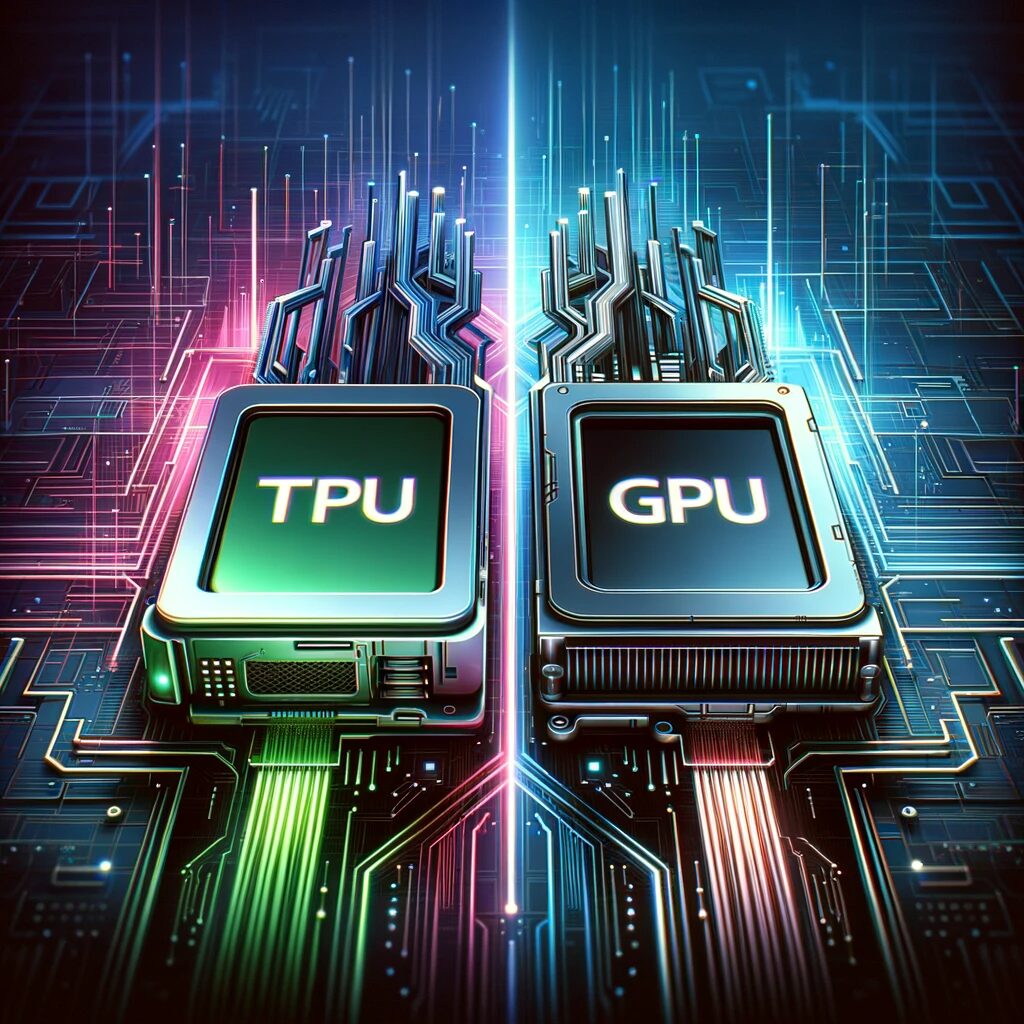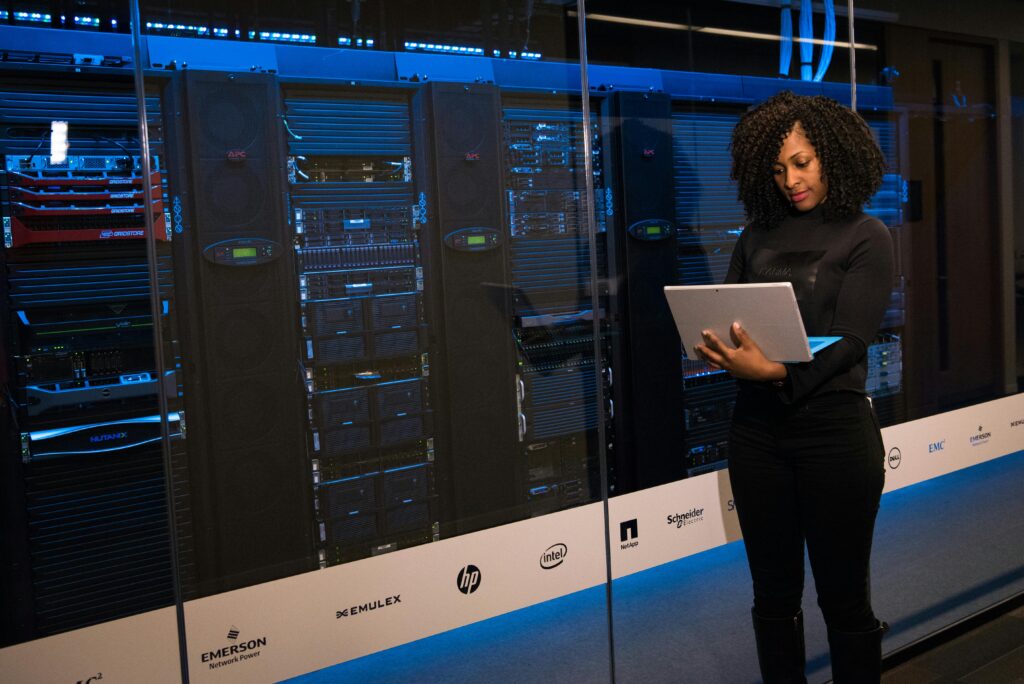Understanding the fundamental differences between TPUs (Tensor Processing Units) and GPUs (Graphics Processing Units) is crucial in high-performance computing. TPUs and GPUs are specialized hardware accelerators designed to handle specific computational tasks efficiently. TPUs, or Tensor Processing Units, are custom-made by Google for accelerating machine learning workloads, while GPUs, or Graphics Processing Units, initially developed for rendering graphics, have evolved to become versatile accelerators for a wide range of applications.
The importance of hardware acceleration in modern computing cannot be overstated. As the demand for processing power continues to grow, both TPUs and GPUs play pivotal roles in meeting these demands. Whether training complex deep learning models or running simulations for scientific research, having the right hardware accelerator can significantly impact performance and efficiency.
In this blog, we will delve into the evolution of GPU technology and the rise of TPUs, uncovering their strengths, weaknesses, and the ongoing power struggle in high-performance computing.
Evolution of GPU Technology
The history of GPUs is a fascinating journey marked by a transformation from graphics-centric hardware to general-purpose computing powerhouses. Initially developed for rendering 2D and 3D graphics, GPUs gained prominence in the gaming industry. They rapidly evolved from simple graphics-rendering devices to highly parallel processors capable of handling diverse computational tasks. This transformation led to the emergence of General-Purpose GPUs (GPGPUs), which unlocked the potential for using GPUs in scientific simulations, machine learning, and more.
Over the years, GPU technology has seen numerous breakthroughs and innovations. Key milestones include the introduction of programmable shaders, the development of CUDA (Compute Unified Device Architecture) by NVIDIA, and emerging GPU cloud computing services. These advancements have made GPUs indispensable in artificial intelligence, data analytics, and scientific computing. As GPUs evolve, they remain vital in modern computing ecosystems, powering everything from gaming rigs to supercomputers.
Rise of TPUs
Tensor Processing Units (TPUs) are a relatively recent entrant in the hardware acceleration arena. Developed by Google, TPUs were designed specifically for machine learning workloads, particularly those powered by TensorFlow. Google recognized the need for specialized hardware to accelerate the growing demands of deep learning tasks, and TPUs were born. Their primary purpose is to accelerate neural network training and inference processes, significantly reducing the time and energy required for these tasks.
While GPUs have proven themselves as versatile accelerators, TPUs offer unique advantages for machine learning workloads. TPUs are optimized for matrix operations, which are fundamental to neural network computations. They feature a higher degree of parallelism and provide faster performance when compared to GPUs for specific AI tasks. TPUs are also available on Google Cloud, making them accessible to many developers and researchers.
Architecture Face-Off
In the ongoing power struggle between TPUs and GPUs, understanding the architectural differences is crucial to grasp their strengths and limitations.
GPU Architecture Deep Dive
- CUDA Cores
GPU architecture centers around CUDA (Compute Unified Device Architecture) cores, individual processing units responsible for executing parallel tasks. Modern GPUs contain thousands of these cores, allowing them to process massive datasets and complex calculations simultaneously. The key to GPU performance lies in the high degree of parallelism these CUDA cores achieve. Additionally, GPUs employ a SIMD (Single Instruction, Multiple Data) architecture, allowing them to execute the same instruction across multiple data points in parallel.
- Memory Hierarchy
GPU memory hierarchy is another critical aspect of its architecture. GPUs have multiple memory types, including global, shared, and registers. Efficient memory management is essential to harness the full potential of a GPU. Global memory, while large, has relatively high latency, while shared memory is fast but limited in size. Properly optimizing data access patterns and utilizing the memory hierarchy is crucial for achieving peak GPU performance.
TPU Architecture Unveiled
- Tensor Cores
TPU architecture is designed around the concept of tensor processing. Tensor Cores are the heart of TPUs, specifically engineered to handle tensor operations commonly used in deep learning tasks. These cores excel at matrix multiplications and can deliver exceptionally high computational throughput for AI workloads. Tensor Cores are optimized for mixed-precision calculations, balancing speed and numerical accuracy.
- Interconnectivity
Another noteworthy feature of TPU architecture is its interconnectivity. TPUs are often interconnected in clusters, forming TPU pods that can deliver substantial computational power. Google’s TPU pods, for instance, can tackle massive AI workloads with ease due to their high-speed interconnects. This interconnectivity is crucial for scaling up deep learning tasks and accommodating the growing computational demands of modern AI research and applications.
Performance Metrics
When comparing TPUs and GPUs, evaluating their performance using various metrics provides valuable insights into their real-world capabilities.
Speed and Throughput
Speed and throughput are critical performance metrics. GPUs, with their massive parallelism and large number of CUDA cores, excel at tasks that can be parallelized. They deliver impressive speeds for various applications, from graphics rendering to scientific simulations. TPUs, on the other hand, are optimized for specific AI tasks, such as deep learning. They can achieve remarkable speeds for these tasks, mainly when dealing with large datasets and complex neural networks.
Power Efficiency
Power efficiency is crucial, especially in data centers and mobile devices. TPUs are known for their excellent power efficiency, making them a preferred choice for large-scale machine learning workloads in cloud environments. Their specialization in AI tasks allows them to deliver high performance while consuming less power than GPUs.
Precision and Accuracy
Precision and accuracy are essential, particularly in scientific and AI applications. GPUs offer a wide range of precision options, allowing users to choose between single-precision (32-bit), double-precision (64-bit), and mixed-precision calculations. TPUs, while optimized for mixed-precision, may not be suitable for applications requiring high double-precision accuracy. The choice between TPUs and GPUs should consider the precision requirements of the specific task at hand.
Use Cases
Understanding the practical applications of TPUs and GPUs is essential to appreciate their impact across various industries and fields.
Machine Learning Applications
Machine learning relies heavily on hardware acceleration, and both TPUs and GPUs play vital roles in this domain. TPUs excel in the training and inference of neural networks. They have been instrumental in breakthroughs in natural language processing, computer vision, and reinforcement learning. Researchers and organizations use TPUs to process vast amounts of data quickly, enabling the development of advanced AI models.
GPUs, on the other hand, find widespread use in machine learning for tasks beyond deep learning. They are employed in scientific simulations, recommendation systems, and image processing. GPUs offer versatility, making them popular for researchers and data scientists tackling a broad spectrum of machine-learning challenges.
Gaming and Graphics Rendering
GPUs have been the driving force behind the gaming industry for decades. Their parallel processing capabilities are well-suited for rendering lifelike graphics, allowing gamers to enjoy immersive experiences. From high-definition gaming to virtual reality, GPUs have set the standard for graphics rendering. Gamers and developers rely on powerful GPUs to deliver stunning visuals and smooth gameplay.
While TPUs are not typically used for gaming, their role in AI-enhanced graphics and real-time ray tracing could impact the gaming industry. However, as of now, GPUs remain the go-to choice for gaming enthusiasts and game developers.
Data Center Workloads
Data centers are the backbone of modern computing, and both TPUs and GPUs find a place in these massive computing facilities. TPUs are particularly valuable in data centers for AI-related workloads. They offer exceptional power efficiency and speed, making them ideal for training and deploying scale-based machine-learning models. Google Cloud’s TPU offerings have made it easier for businesses to leverage TPUs for various data center tasks.
Conversely, GPUs are utilized in data centers for a wide range of applications, including scientific simulations, video transcoding, and virtualization. Their versatility and large user base make GPUs a staple in data centers worldwide. They are often used to accelerate diverse workloads, making them an integral part of cloud computing infrastructure.
Industry Adoption
TPUs have gained prominence in the technology industry, particularly within organizations focusing heavily on AI and machine learning. Companies like Google have achieved remarkable results using TPUs for language translation, image recognition, and natural language understanding tasks. Researchers and startups in healthcare, finance, and autonomous vehicles have also embraced TPUs to accelerate their AI-driven innovations.
GPUs dominate various sectors, including gaming, scientific research, and creative industries. Gaming companies continue to push the boundaries of graphics realism, thanks to the powerful GPUs that fuel their consoles and PCs. In scientific research, GPUs are indispensable for simulations like physics, chemistry, and climate modeling. Creative professionals rely on GPUs for rendering 3D animations, video editing, and digital content creation.
Summary
Thanks to their precision, speed, and power efficiency, TPUs, designed for AI and machine learning, have made significant strides in these fields. In contrast, GPUs, known for their versatility, continue to dominate various sectors, including gaming, scientific research, and creative applications.
The choice between TPUs and GPUs depends on specific project requirements. Their architectural differences and performance metrics are crucial in determining the best fit for the task.
The coexistence of TPUs and GPUs reflects the evolving landscape of hardware acceleration in our data-driven world. Both have unique strengths, and their competition drives innovation across various fields. As technology advances, we can anticipate even more exciting developments in hardware acceleration.





